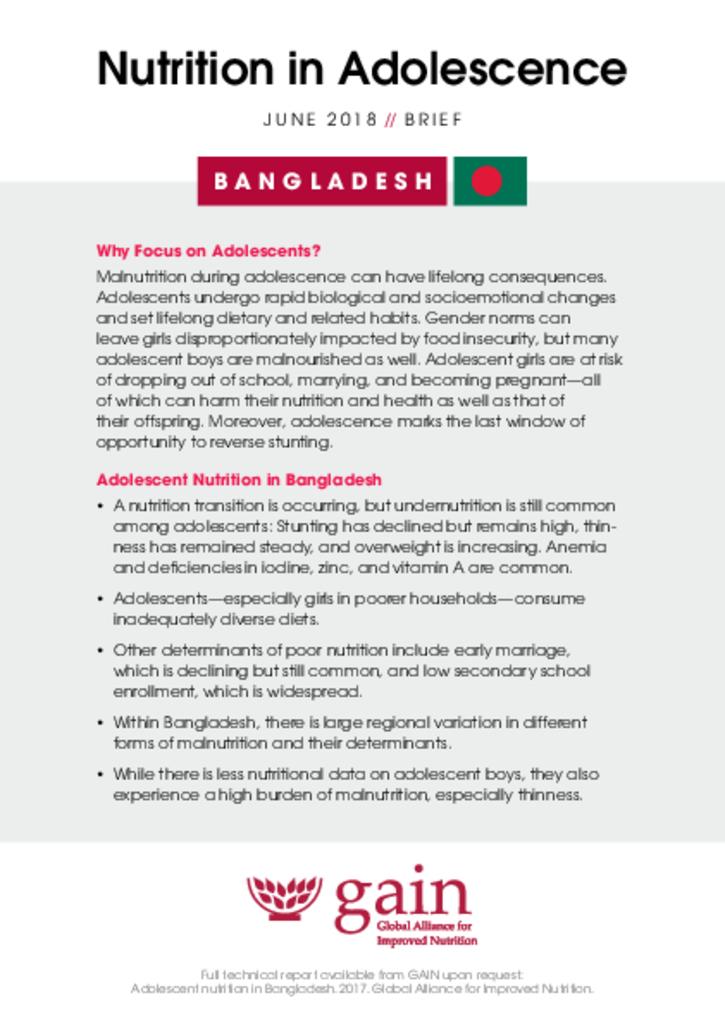Malnutrition during adolescence can have lifelong consequences.
Adolescents undergo rapid biological and socioemotional changes and set lifelong dietary and related habits. Gender norms can leave girls disproportionately impacted by food insecurity, but many adolescent boys are malnourished as well. Adolescent girls are at risk of dropping out of school, marrying, and becoming pregnant - all of which can harm their nutrition and health as well as that of their offspring.
Moreover, adolescence marks the last window of opportunity to reverse stunting.
Adolescent Nutrition in Bangladesh
A nutrition transition is occurring, but undernutrition is still common among adolescents:
- Stunting has declined but remains high, thinness has remained steady, and overweight is increasing. Anemia and deficiencies in iodine, zinc, and vitamin A are common.
- Adolescents - especially girls in poorer households - consume inadequately diverse diets.
- Other determinants of poor nutrition include early marriage, which is declining but still common, and low secondary school enrollment, which is widespread.
- Within Bangladesh, there is large regional variation in different forms of malnutrition and their determinants.
- While there is less nutritional data on adolescent boys, they also experience a high burden of malnutrition, especially thinness.
